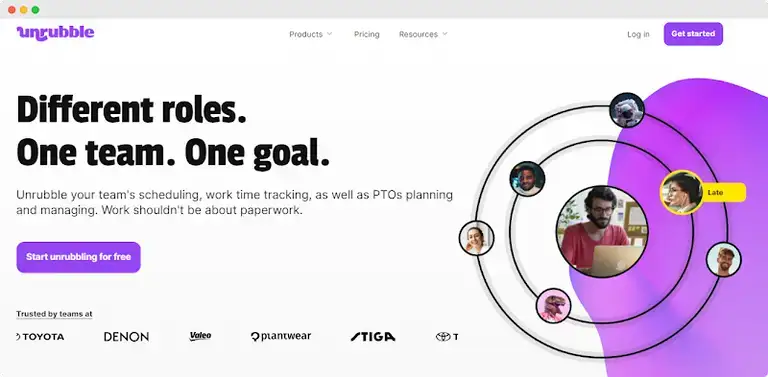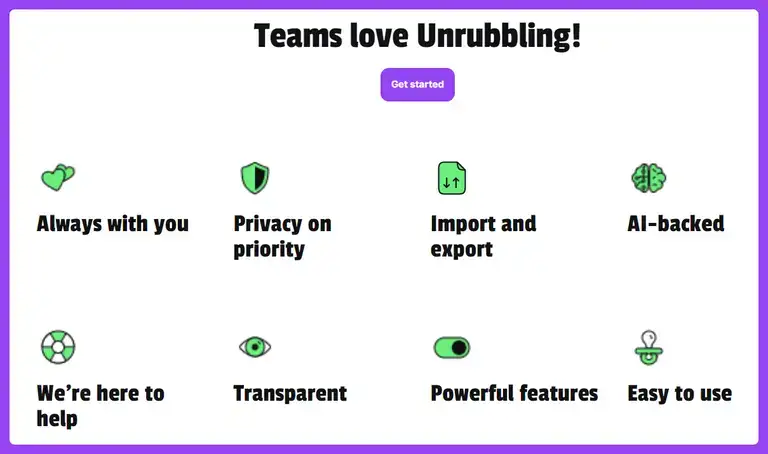Your employees need time away from work to function well in the workplace, and even more importantly, preserve their physical and mental health.
As a way to maintain a healthy working environment, it is essential to recognize and respect this need.
But first, you must understand the various types of time off, such as PTO or vacation. Without this, you may not be able to provide proper time off to your employees or even get in legal trouble.
So whether you're an employer shaping leave policies or an employee who seeks clarity, this guide will navigate you through the intricacies of PTO and vacation.
What is PTO?
PTO or paid time off - encompasses various policies dictating employee leave. It's a flexible and simple system that grants employees a set number of days that are paid, and they can utilize it for various purposes, including:
- vacation,
- sick leave,
- parental leave,
- disability leave,
- and personal days.
Thus, PTO may come in handy in many situations. It allows staff to request time off work, especially when unforeseen circumstances happen. Employees may use PTO regarding their needs and manage them according to their preferences.
Different types of PTO policies
PTO policy is a set of rules regarding employees’ paid time off in a calendar year. And we can distinguish between different regulations.
Bank PTO
Some companies opt for a unified PTO plan. Here, employers may offer a general PTO bank and allow employees to use their time as needed.
Unlimited PTO
Such a policy grants employees the freedom to take a break from work without a predetermined limit. This approach usually emphasizes trust and responsibility.
Accrued PTO
Accrued PTO involves the gradual accumulation of paid leave over time. This balanced system allows employees to accrue leave based on their tenure with the company.
Simply put, the longer someone works at a company, the more PTO they have at their disposal.
Policies can vary, so employees need to learn about them and be aware of their rights. This way, they will know if they may request payment for unused PTO days at the end of the year or are due payment for unused time for vacation upon termination of employment.
What is vacation time?
On the other hand, there are vacations.
Vacation time refers specifically to the designated period during which an employee is granted leave from work, typically for:
- leisure,
- relaxation,
- or personal activities.
Unlike paid time off policies - which are a broader category that encompasses various types of leave - a separate vacation policy is specifically allocated for planned breaks from work.
It's an essential element in every company that recognizes the importance of rest for individual well-being and productivity.
Companies typically provide PTO and vacation time to full-time employees, but the case may look different in various businesses, states, etc. For example, in New York, there's no legal obligation for employers to furnish paid vacation - this makes them free to establish their own vacation policies.
Moreover, some states require employers to pay out the value of unused paid time off (including vacation and sick leave) at the end of employment.
The key differences between PTO vs Vacation
Understanding the difference between paid time off and vacation is crucial for effective leave management. They both have unique characteristics and serve varied purposes in the realm of employee benefits.
The purpose
Employees can use paid time off from work for many purposes. It includes sick days, personal time, and various paid holidays. In contrast, vacation serves the exclusive purpose of providing employees with dedicated leisure time.
So, while PTO allows for a versatile blend of rest and personal responsibilities, vacations ensure focused downtime for mental and physical rejuvenation.
Flexibility
PTO has greater flexibility as it can be used for different types of events. It allows for both pre-planned absences and unexpected needs.
On the other hand, vacation planning requires some coordination because of the potential overlap with colleagues' time off. So before using them, employees should think about other co-workers and consult with them about overlaps.
Paid days of PTO offer a versatile approach and provide employees with adaptable options for days they can utilize for themselves. Vacations are not so flexible.
Planning
Another difference between vacation and days of PTO is about planning. You don’t need to report paid time off in advance - as it is more adaptable, you can use it spontaneously or with minimal prior notice.
Vacation planning necessitates meticulous scheduling and requires employees to notify employers well before.
This difference emphasizes that while paid time off allows for immediate breaks, vacations demand a strategic approach to align with organizational workflow.

Tracking
PTO is easier to track since its unified policy typically encompasses various leave types. Both employers and employees benefit from a transparent and efficient leave management system. Vacation days require precise tracking. They are presented independently from sick time and other leave categories, so they are more challenging.
Vacation days and PTO need to be tracked. However, the difference between the two times away from work is that this paid time off is easier to track than vacations.
How to choose the best PTO policy
If you want to choose the right policy, you need to understand them all, as each one addresses different organizational needs and employee preferences.
Let's check three common scenarios:
Bank PTO
A Bank of PTO consolidates various types of leave, such as vacation, sick days, and personal days, into a unified pool - if an employee needs a day off for a family event, they can spend it from the bank.
Employees can draw from it for any type of absence. Such a pool offers flexibility in how staff allocate their paid leave.
💪🏼 This approach simplifies administration and provides employees with more control over their time off.
❗ Yet, it requires effective communication and clear rules to ensure fair and transparent usage, preventing conflicts over peak vacation periods.
Example: In a marketing agency, an employee might use a number of PTO days for a week-long vacation. Later in the year, they could spend the remaining days for intermittent short breaks or personal days.
Unlimited PTO
Unlimited PTO shows a different approach. It says that PTO hours abolish strict accruals or predefined banks. Instead, employees have the freedom to take as much time off as needed, with one condition: it doesn't impact their work responsibilities.
This policy exemplifies a trust-based system where employees are responsible for managing their leave and can use it when they feel they need it.
💪🏼 Such an approach builds a culture of mutual trust and responsibility.
❗ However, it requires excellent work and performance metrics to ensure your productivity doesn't suffer.
Example: In a creative design studio, the focus is on results rather than hours worked. The policy encourages employees to take time off when needed without strict accruals. As a result, a graphic designer working on a tight project deadline might take needed time on a break after project completion to recharge creatively.
Accrued PTO
This policy involves the gradual accumulation of leave based on an employee's tenure. Employees earn a certain amount of PTO for each hour or pay period worked. This system ensures that the longer a worker stays with the company, the more PTO they accrue.
💪🏼 This approach provides a structured balance and allows employees to accumulate leave gradually.
❗ Nevertheless, it necessitates careful management to prevent excessive accruals that could strain resources when many employees decide to go on leave simultaneously.
Example: Consider a manufacturing company where employees calculate PTO based on their work period. For example, for every quarter worked, they earn an additional day of PTO. Or, for every 40 hours worked, employees accrue 0.50 days of PTO. This gradual accrual system rewards loyalty and provides more substantial benefits to long-term staff.
Track your employees’ time with Unrubble
The best part is that you don't have to spend hours monitoring the free days of your workforce. Employees can take time off for various reasons, and you won't miss a thing thanks to our tool - Unrubble.

Don't worry about how many days of vacation they have left or whether they have unused PTO at the end of the year. Unrubble will do everything for you.
With our PTO tracker, you can get an all-encompassing solution for businesses. For those drowning in PTO requests, our request management system efficiently handles absences, leave tracking, vacation days, work from home, and business trips.
It ensures accurate tracking without the hassles of payroll errors. It also provides accuracy, efficiency, and real-time insights.
Unrubble simplifies PTO time tracking with tailored features. The glove-like fit ensures it seamlessly integrates with your team, runs in the background, and stays synced with other software.
But Unrubble doesn't just manage leave - it boosts remote productivity by unlocking insights into work-from-home trends and promoting work-life balance.
All of this is in one tool.

Conclusion
The nuances between PTO time and vacations are noticeable. PTO, with its flexibility, encompasses various types of leave and offers adaptability to the diverse needs of the workforce. Vacation, on the other hand, is a dedicated time for leisure, providing employees with the chance to rejuvenate.
Whether employees use their vacation vs PTO, you need to acknowledge these differences and record them in the system accordingly.
Thus, make the switch to Unrubble. Our tool streamlines leave management and avoids chaos in PTO balances, double bookings, and surprises.
How is this possible? Check it out for free and find out for yourself.








